We make beautiful flower beds of perennials in the country with our own hands
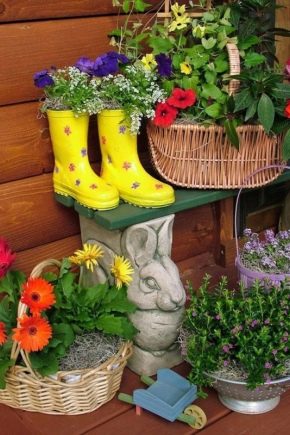
Initially, flower beds were created not for aesthetic pleasure, but for medicine. In pharmacies and hospitals, flower beds with medicinal plants and vegetables were grown. And only in the 50s of the XX century carpet beds became fashionable, which required a lot of effort to maintain their own beauty.
Today, beautiful flower beds are made out not only from annual plants, but also from perennials. How to grow such a flower bed with your own hands so that it will delight you with its beauty for more than one year?

Peculiarities
A flower garden of perennials is often called a flower bed of continuous flowering, because from early spring to the very snow, it pleases with its multicolor. And for professional gardeners, the flower bed blooms in winter. And this is a clear advantage over annual flowering plants.
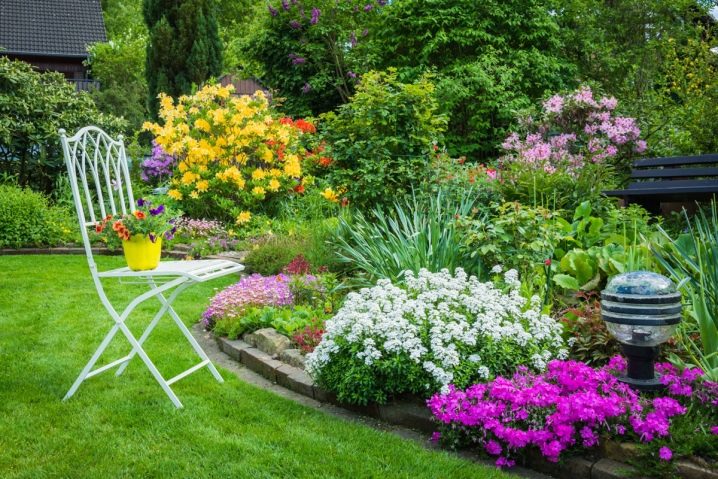
There are other positive characteristics and features:
- The main thing is durability. For several years, each plant grows in such a way that the old bushes can be removed completely painlessly and a new shoot will grow in their place next year.
- Ease of care: before planting, the soil is well fertilized and baking powder (expanded clay, sand) is introduced, after planting the plants they are watered in a timely manner and weeds are removed.
- Financial costs - about 1 thousand rubles per one flower bed for several years in advance. While seeds or seedlings of annual plants have to be bought annually.
- Perennials are considered sparing - they do not drain the land and do not require regular feeding.
- Such plants are unpretentious - some of them will grow in the sun, others are suitable for partial shade, the third for shade, and the fourth will grow calmly with any amount of sun.
- To create such a flower bed, there is no need to invite a landscape designer every year.
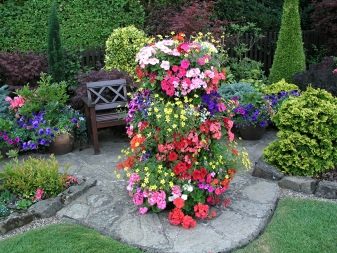
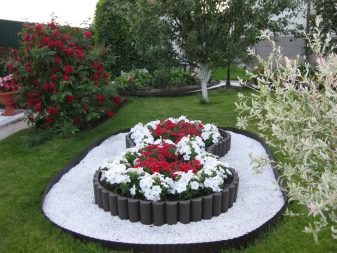

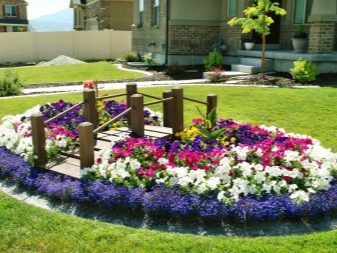
Even if the flower garden was originally created with its help, then next year the flower bed only needs to be slightly updated. And you can do it yourself.
How to do it?
To create a flower bed that will delight you for several years, you need to think about the idea of a flower garden before the season starts. To bring it to life, do not hesitate to seek help from experts or neighbors. The next step in implementing the idea is to create a plan.
It can consist of several points:
- Come up with a name according to the idea.
- Find a place for a flower garden.
- Think over its shape.
- Present a figurative layout.
- Create a planting scheme (it is better if it is colored, voluminous, very detailed, drawn from several angles, indicating the time of flowering of plants), taking into account light and shadow.
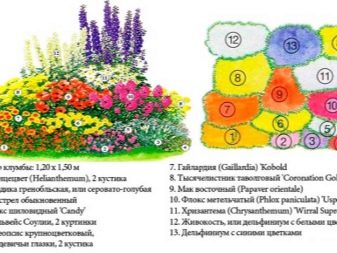

- Choose plants in such a way that the flowerbed blooms continuously and includes low-growing plants and flowers with a long stem.
- Pay attention to the soil: apply fertilizer and leavening agents.
- Make a frame for a flower garden: live or artificial.
- Carry out pre-planting work: loosening and watering.
- Plant flowers, not forgetting that over time they will grow (which means that now they need to be planted at a considerable distance from each other).
- Regularly photograph your flower garden in order to avoid mistakes when decorating other flower beds, as well as to preserve this beauty in memory.
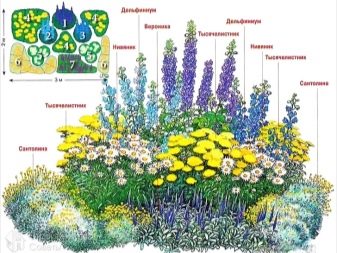
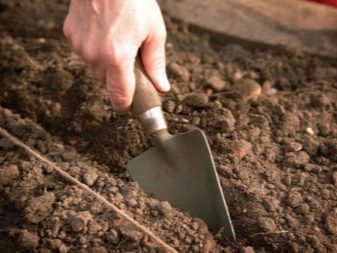
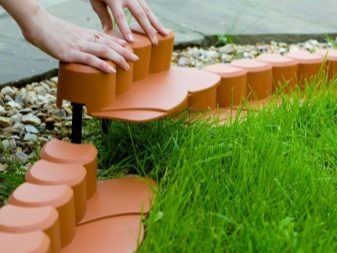
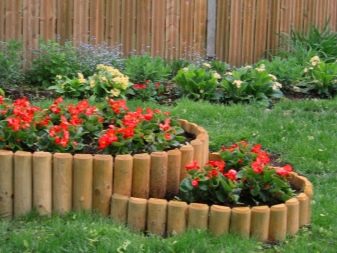
When choosing plants, you need to remember that for one square meter they use:
- about 10 ground cover flowers;
- no more than 7 undersized;
- plants of medium growth - 5;
- plants on a high stalk - no more than 7.
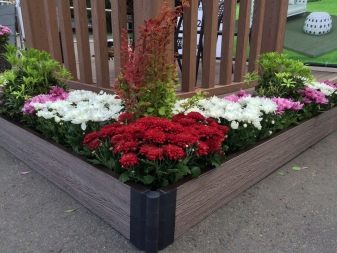
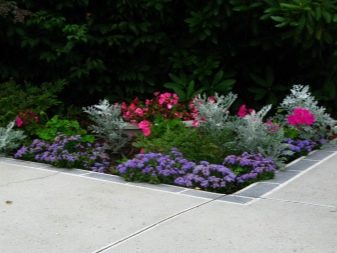
Views
According to the density of planting of plants, several types of flower beds are distinguished:
- Tapeworms - a lonely plant (flower or bush) with large flowers, large leaves; they should be clearly visible; more often it is roses, mallow, amorph.
- Rabatki - narrow flower stripes stretching along the fence, house walls, paths; to add beauty, 2-3 species of plants of different heights and colors are planted.
- Curbs - this is a kind of flower edging of a flower bed; the borders are always undersized and one-color, while the color is selected in contrast to the flower bed; in addition, you can pick up plants with a strong scent that will savor the summer evenings in the garden.
- Parterres - flower beds that need space, since they include several elements: lawn, rabatka, curb.
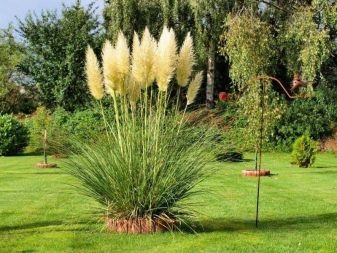

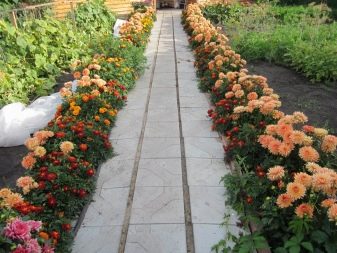
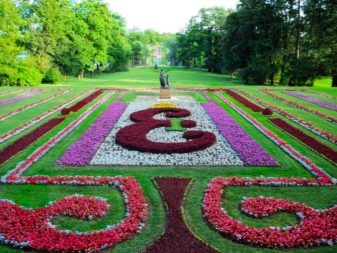
- Mixborders popular with non-professional gardeners, since plants of various flowering and color periods are planted in them; such a flower bed blooms from early spring to the very frost.
- Arrays that's why they are called so because they occupy a large area; this includes plants that do not require close attention to themselves, and thus attract amateur gardeners.
- Groups - flower beds of any, usually smooth shape; their main difference is bright spots in the middle of the lawn or site.
- Arabesque are made out with the help of colored stones and pebbles, the arrangement is horizontal and inclined.
- Flowerpots, for example, gabion - a mesh used as a metal frame-basket for stones.
- Rockery or rock garden - imitation of mountainous relief.




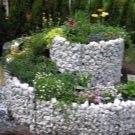
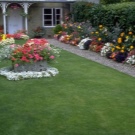
Materials (edit)
As wonderful as the flowers themselves are, they need to be beautifully decorated. After all, flower beds can be very diverse. And if professionals use special devices and structures, then amateurs use the material at hand for this: pieces of bricks, tires, old basins and watering cans, old shoes, boxes, dishes, cobblestones, pieces of metal, canvas.
Roofing material, polyethylene, cement mortar may also be useful. The main thing is soil, sand, expanded clay.
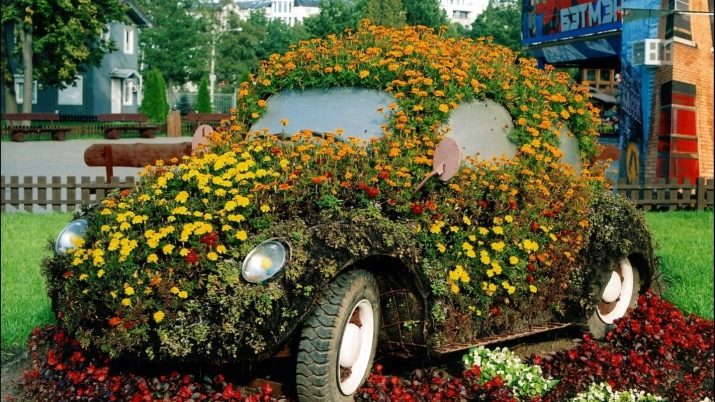
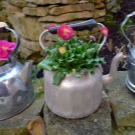
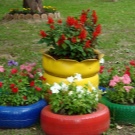
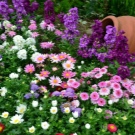
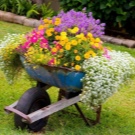
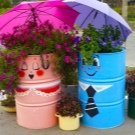
A place
Before choosing a place for a flower garden, you need to consider the following points:
- will he not interfere with the passage;
- whether it will be clearly visible;
- whether there is enough sunlight for him;
- what shape is most suitable for the selected plants;
- what function the flower garden should perform;
- when the peak of flowering will be observed.
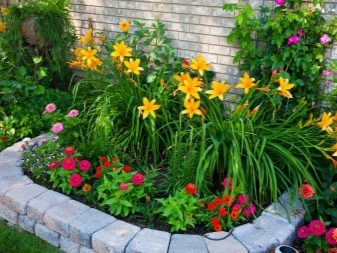
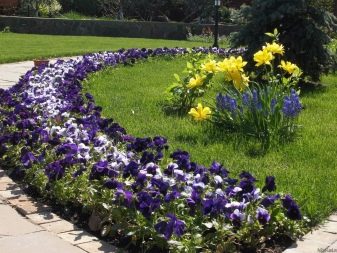
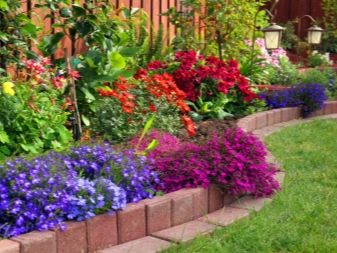
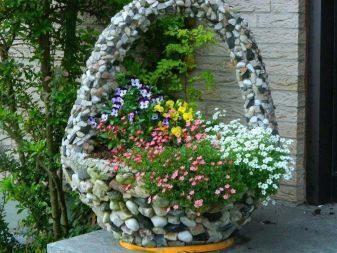
Based on this, and also, depending on the available space, the following places for flower beds are chosen:
- along the track or at the end of it;
- along the fence;
- in front of the house against the background of buildings;
- on the border of two functional areas, for example, a recreation area and a vegetable garden;
- on an artificial or natural slope;
- on stairs;
- on lawns;
- in the case of vertical or raised flower beds, the location can be very different.

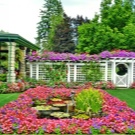
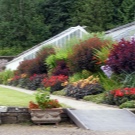



Dimensions (edit)
A flower arrangement in its size should be strictly proportional to the area of the plot: a small plot - a small flower bed, a large plot - a large flower garden or several flower beds.
The flower beds can be of completely different sizes: from 0.75 m (tapeworms) to 20 m in diameter for the massifs. But usually round flower beds have a diameter of 4-6 m. Work can be several hundred meters long. According to the technology, the soil is always made convex, the slope is 5-10 degrees. This is done to drain the water and give the flowers a better view.
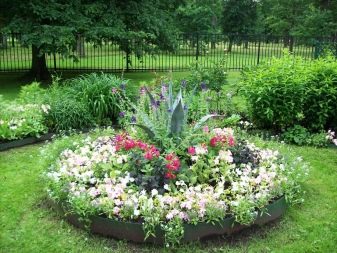
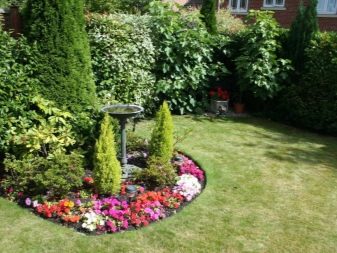
The highest plant height is considered to be 50-80 cm. But this is in the event that shrubs are not used. When using, for example, evergreen thuja, as the main plant of a flower garden, the height will be much higher. Border flowers rise 8-10 cm above the lawn.
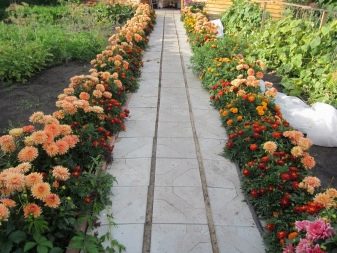
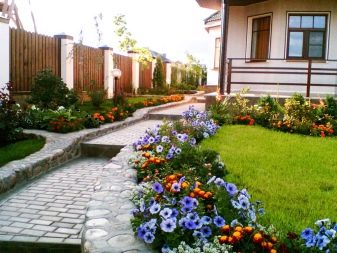
Colors
At the idea stage, you need to think over the color scheme that you would like to see on the flower bed. The color combination can be very diverse.
The principle of creation is as follows:
- Monochrome flower bed - one shade, but different plant heights; The white flowerbed is especially chic - it looks very delicate, both vertical and tapeworm.
- Contrasting allows for a color explosion.
- From plants of similar shades - a smooth transition, for example, from red to yellow or from lilac to pink.
- Neutral colors - calming eyes, such as green rose bushes with white flowers.

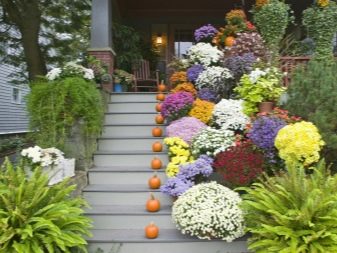
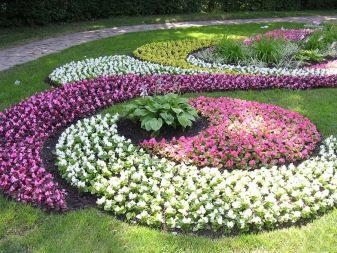
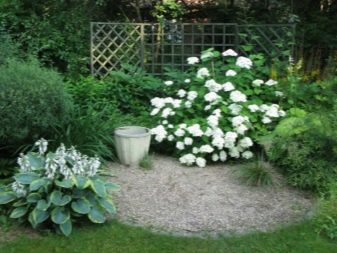
Flower beds are planted for visual relaxation or emotional outburst.
Psychologists, together with florists, offer advice on placing and combining flowers in a flower bed:
- for peace of mind, you need to choose either warm or cold colors; for an emotional explosion - contrasting colors;
- smooth plant leaves reflect color, matte absorb;
- for a visual increase, flower beds minimize the number of colors and their contrast;
- in order to visually enlarge the flower garden located along the fence or building, tall blue flowers are planted in the background, undersized yellow flowers in the foreground;
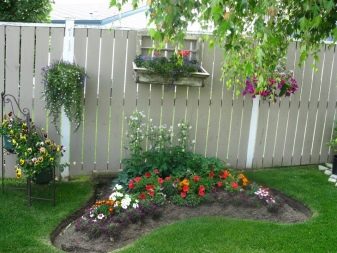
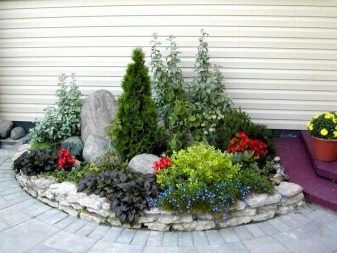
- bright colors in the foreground, which means that in the background - calm;
- several flower beds, combined into one flower garden, should be formed as follows: the background is calm, bright colors - in small groups;
- over a large area, it is allowed to create one flower bed with bright plants;
- if there is a bright alpha plant in the flowerbed, then the rest of the flowers should be its pale shadow;
- before planting, it is better to draw in color the area that this or that color will occupy: a small red spot among blue flowers is appropriate, a large one is annoying;
- the villager prefers bright colors, the urban - pastel shades: you need to take into account the location of the flower garden, not only its urbanization, but also the climatic zone.
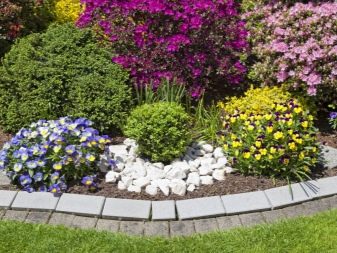

The form
Since perennials will grow in the same place for several years, it is necessary to carefully consider the shape of the flower garden. At the same time, it should be in harmony with nearby structures: a house, a gazebo, a path, a fence.
Modern design is increasingly moving away from the usual forms, nevertheless, everything is based on them:
- a round or oval flower bed can accommodate a tree species or shrub in the center, and herbaceous plants - in a circle; flowers are planted in such a way as to create continuous flowering from the edge of the circle to the center;
- a rectangular flower bed is decorated with patterns and ornaments from the plants themselves;
- a square or rhombus is suitable for vivid portrait paintings, animal drawings, etc.;
- the use of triangular flower beds requires certain skills: individual triangles look harmoniously on an area of clear geometry, in other cases a triangular flower bed should become part of a polygonal flower garden;
- long flower beds - the beds may or may not be symmetrical, but they are located along the paths or parallel to them.
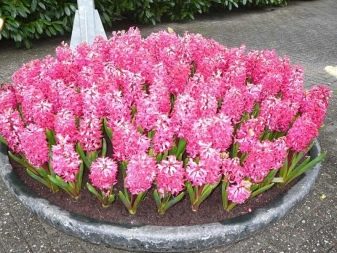
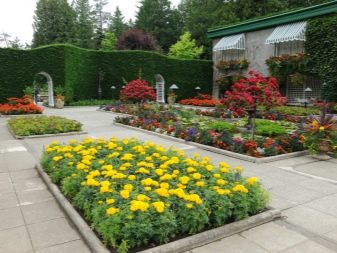
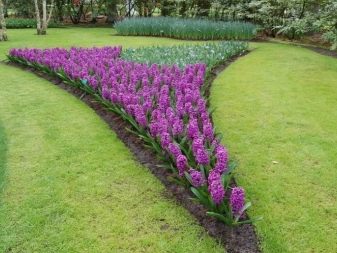

Flower bed design
There are many design options for decorating flower beds. You can always come up with your own version. But first, we propose to get acquainted with the already existing flower bed designs.
So, according to the design idea of a flower bed, it happens:
- Regular - This is a flower garden, which is a clear geometric shape or ornament. Such a flower bed is very similar to a carpet one, but it is distinguished by a geometric pattern.
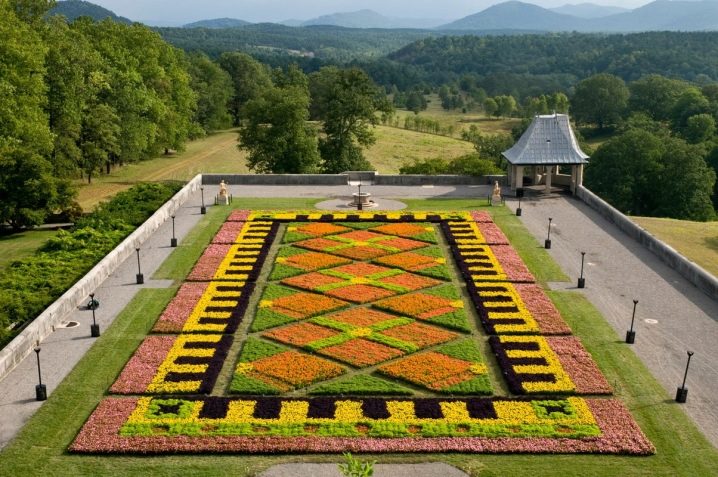
When creating such a flower garden, the following conditions must be taken into account:
- plants should not be in the shade at all;
- they need to be planted not singly, but rather tightly;
- for such a flower bed, not an orderly, but a group planting method is better;
- flowers should be of the same height, time and flowering period;
- after planting, a few plants should remain in case of replacing wilted flowers;
- such beds consist of perennials and annuals; if desired, they can be decorated with perennial roses, peonies, hostas, as well as bulbous tulips, crocuses, lilies, daffodils, gladioli;
- a regular flower bed is not the easiest to care for, it is better for beginners to use other types of flower beds.
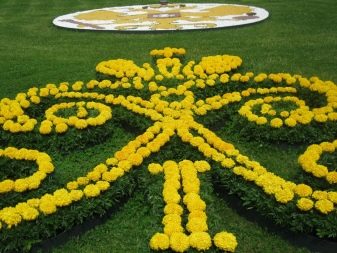
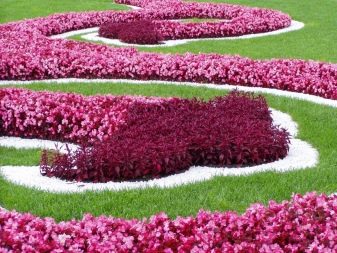
- Irregular - an easier to create flower garden, consisting of annual and perennial plants, as well as ornamental shrubs, conifers and lianas.Perennial flowers or shrubs can be the main element. And every year you can plant annuals around them. With proper organization, you can create a continuous flowering flower bed when the plants bloom alternately.
For this, perennial peonies, delphinium, phlox, rose bushes, drought-resistant allium are suitable. You can supplement them with snapdragons, asters, balsams. A beautiful frame will turn out from marigolds.
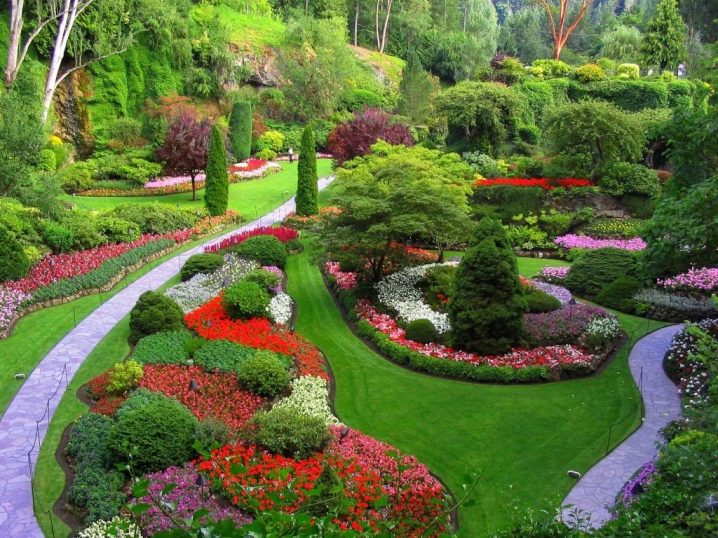
- Carpet is the most time consuming. In addition to significant material costs, it will require artistic taste and knowledge of floristry. Flowers for such a flower bed are selected with good bushiness, one-level height, but different colors. A carpet flower garden is a drawing, and not necessarily a familiar carpet: it can be a cartoon character, animalism, a portrait. This is what makes it different from a regular flower bed.
- Raised most common in cities. But amateur gardeners also arrange such flower beds from improvised material and even old carts and cars. The earth in such structures warms up faster, but it also needs to be watered more often. But alpines and dwarf trees look good here.
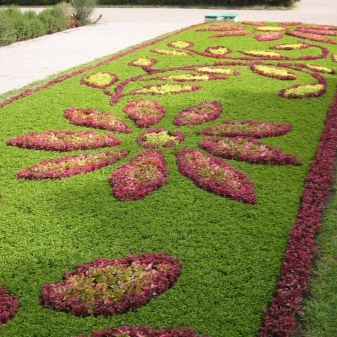
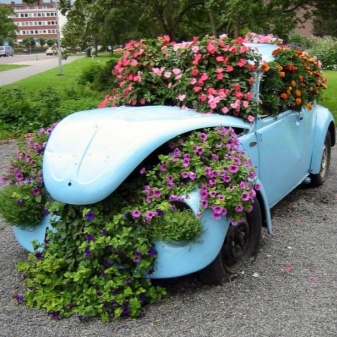
- Vertical - this is a flower bed or several mini-flower beds located at a height from the ground. When creating such a flower garden, a drain for water should be provided.
- Multidimensional - a more complex version of a vertical flower bed. This is a voluminous flower garden in the form of a specific animated image or piece of furniture. But it can also be a whole landscape composition with mountains, hills and reservoirs. The main thing is to think over watering such a "curvy" horse or gnome.

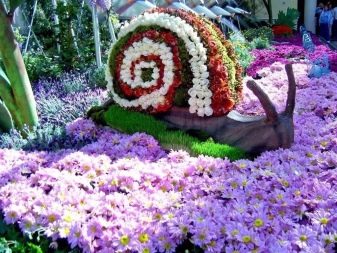
- Annular a flower bed is created to frame a tree, a monument, a raised flower bed. The rule of planting plants in such a flower garden: from the high center to the low edge. In this case, you can create several multi-colored rings. If you plant an unpretentious purslane here, then it will withstand the hot sun, and partial shade, and light frost.
- Ostrovnaya the composition may consist of a large stone and several perennial bushes. A distinctive feature is a small flower bed in a large colorless space. The main care consists in the timely mowing of the grass around the flower bed so that it does not fill the flower garden.

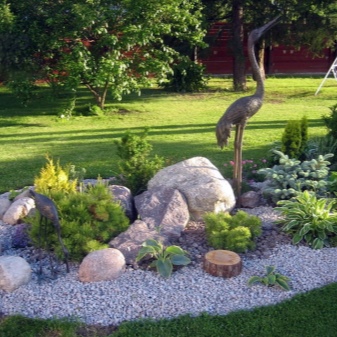
- Flower beds-panels require a large enough space and therefore are not suitable for every garden plot. In addition, it is a complex composition that requires floristic skills. But if it is possible to create such a panel from perennial (coupled with annual) flowers, then it will be a real decoration of the personal plot.
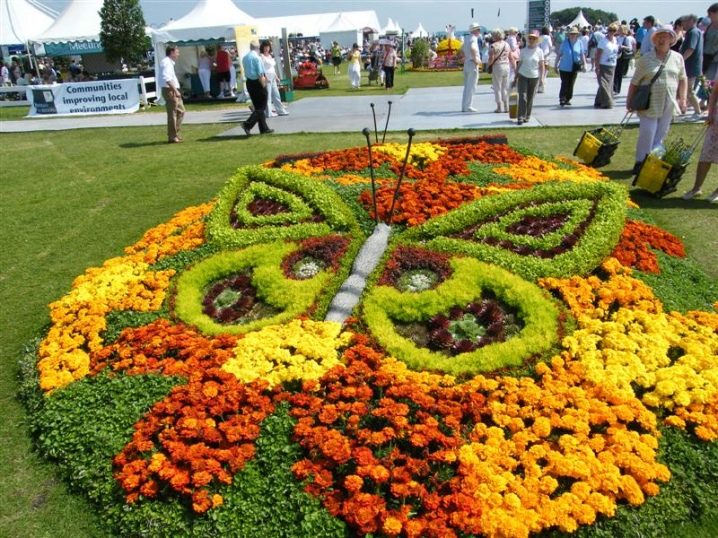
- Modular a flower bed is being built instead of several sidewalk slabs. This option can be foreseen before installing the coating. The flower garden is unusually beautiful and original. On a small plot of land, the "checkered" module will expand the space and correct its shape. If it is impossible to remove the tiles from the paving, they make a false module: several containers with soil and plants are installed in the right places and framed with stone or vibrocasting tiles.
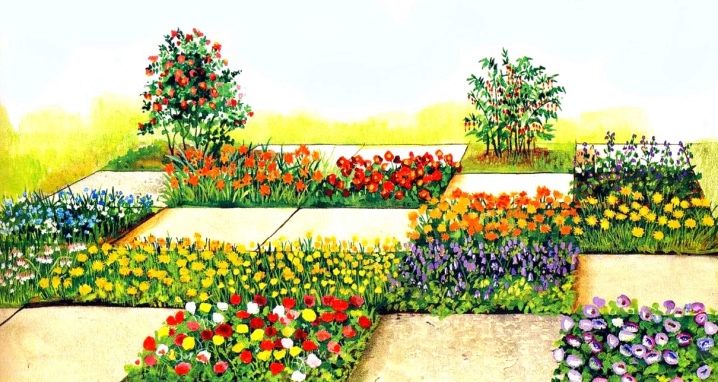
- Monoclumba - the simplest design solution, there can be two options:
- plants are different in appearance, but the same in color;
- plants of the same species, but different colors and flowering times (a rose garden is a typical mono flower).
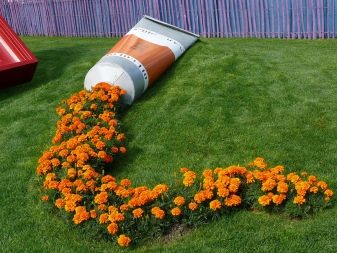

Required tools
Depending on the type of flower bed, you may need different tools to make it. The main ones will be:
- hammer;
- axe;
- hacksaw;
- Master OK;
- construction scissors;
- plastic curbs;
- level.

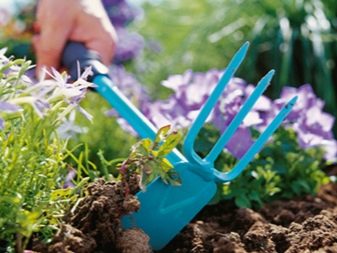
To work on creating and caring for a flower bed, you should always have:
- shovel;
- shovel (scoop) for planting;
- rake;
- rakes for cleaning garbage between perennials;
- hoe or weeder;
- watering can;
- cultivator for soil preparation and loosening;
- gloves.
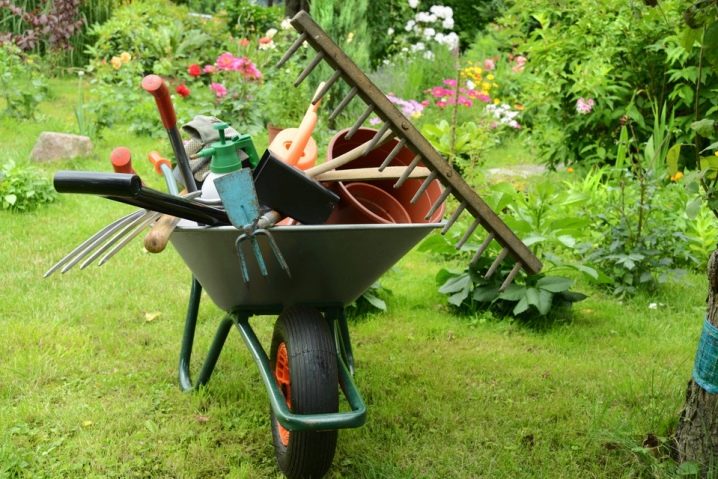
Professional advice
For beginner florists, professional florists and experienced summer residents have prepared a few tips:
- you should not start with complex design solutions, but you also should not be afraid to invent your own forms for flower beds;
- for a start, multilevel perennials are best placed in long rows;
- the correct selection of plants will provide wave flowering for the entire season;
- in addition to flowers, it is imperative to include plants with beautiful multicolored foliage;
- low and medium-sized plants need to be planted at least two, giving them the opportunity to grow;
- if there are concerns about the wrong selection of plants, it is better to make 2-3 flower beds with different color options;
- if you do not like the result, you can remove the plant and plant another one next year.
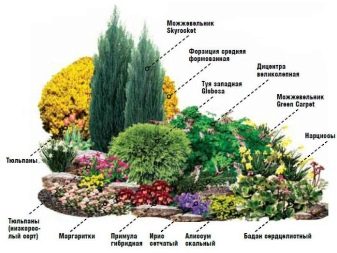

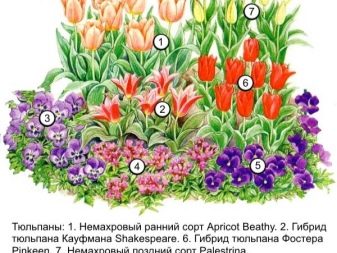
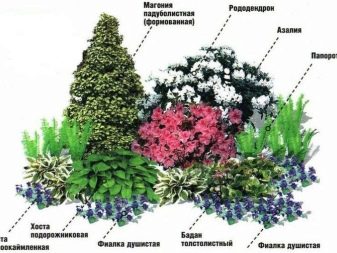
Not all summer residents have a desire to spend all their free time in the beds and in flower beds. Then a bed for the lazy will come to the rescue. In stores, you can buy seeds for ready-made schemes. The price of the set is about a thousand rubles.
The main thing is that such a project provides for continuous flowering throughout the season and does not require much maintenance.
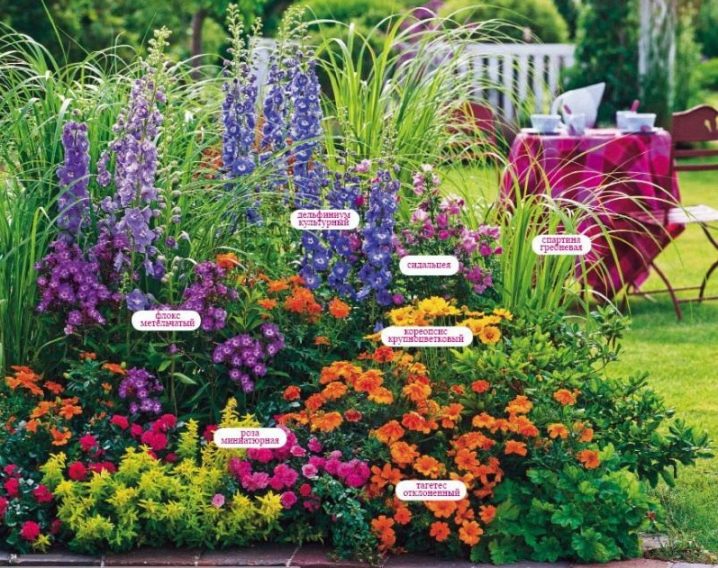
Contemporary examples and variants
To decorate beautiful flower beds in the country with your own hands, knowledge about the flowering time of various plants will help. Such information will help you choose the right options for drawing up a flower bed, and will make the flower garden beautiful. At the same time, modern florists use both annual and perennial plants to create a flower garden of continuous flowering.
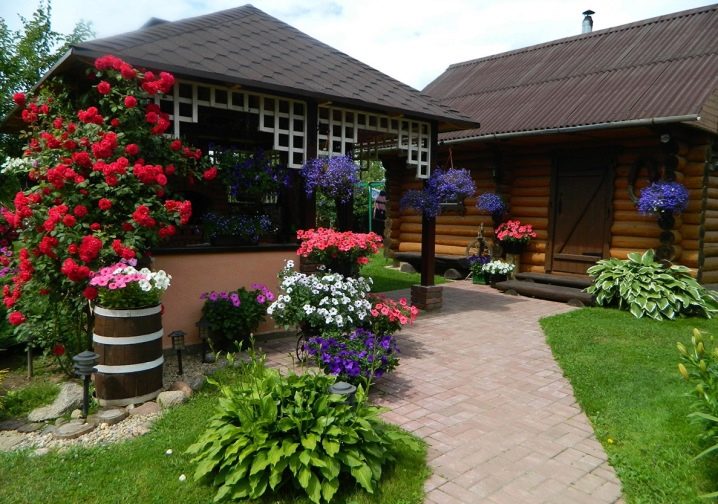
So, starting in early spring, they bloom:
- hellebore black (20-30 cm tall, white flowers);
- snowdrop (10-40 cm, white inflorescences);
- evergreen crumbs (10-20 cm, with yellow flowers);
- scrub (10-25 cm, shades of blue);
- crocus (15-25 cm, with white, yellow, purple flowers);
- peony (up to 100 cm, there are a lot of shades);
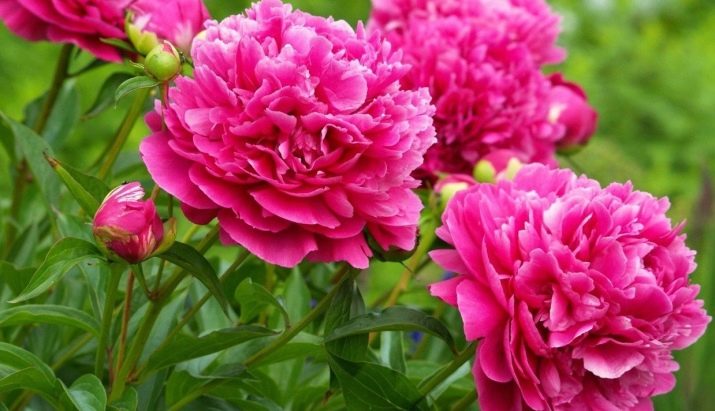
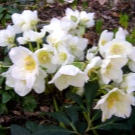

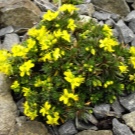


A little later, daffodils, different varieties of tulips, lilies begin to bloom. Earlier flowers are planted closer to the center.
Bloom from June to September:
- pansies (10-30 cm, with multi-colored double flowers);
- garden geranium (25-55 cm, all shades of red and purple);
- peach-leaved bell (60–80 cm, with blue flowers);
- Krasnoday (45-120 cm, many shades);
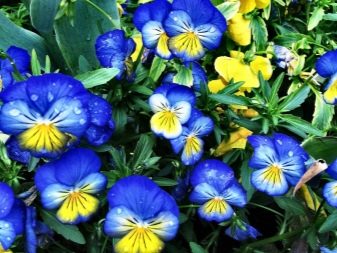
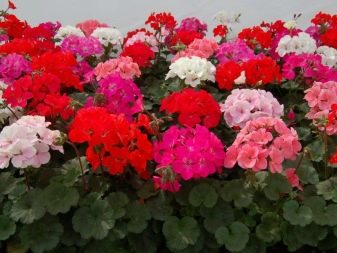
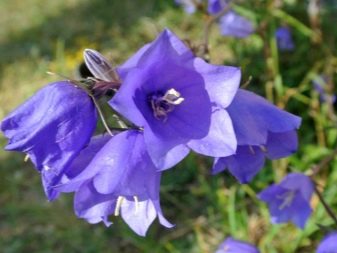
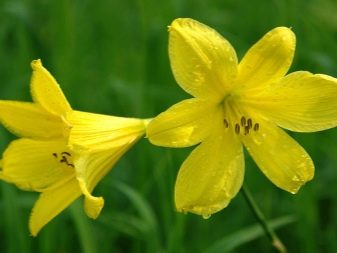
- Chinese swimsuit (60-90 cm, orange petals);
- primroses (10-80 cm with great color variety);
- rose (from 30 cm to 6 m, very different colors);
- yarrow (40-60 cm, white, purple, red, yellow flowers);
- phloxes (50-150 cm, from white to lilac).
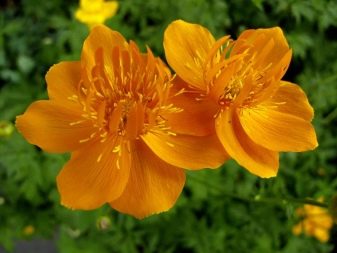


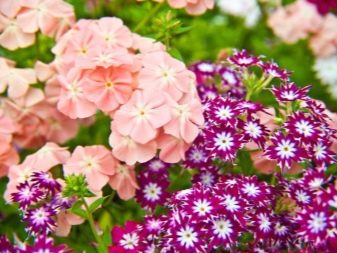
From the end of August until the very first frosts, they bloom:
- asters (20-45 cm, white to purple);
- aconite Karmikhel (90-150 cm, blue-violet flowers);
- chrysanthemums (30-120 cm, a large number of shades);
- rudbeckia Sullivant (80-100 cm, flowers with yellow-orange petals).
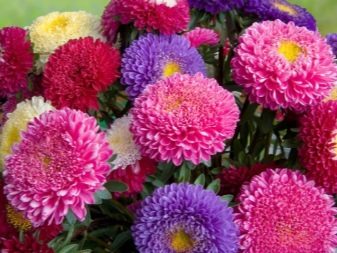
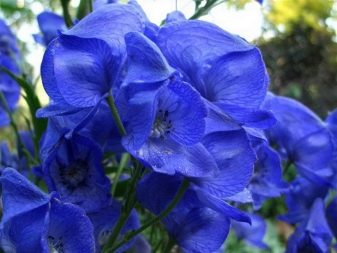
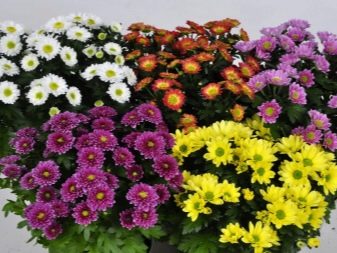

Using the schemes given by us, you can create your ideal flower bed, which will delight everyone with beauty for a long time. And although everyone has their own concept of the ideal, florists offer the most spectacular and original examples of the correct or unusual arrangement of plants in a flower bed and in a flower garden.
How to make a beautiful flower bed in the country with your own hands, see the next video.







































































































The comment was sent successfully.